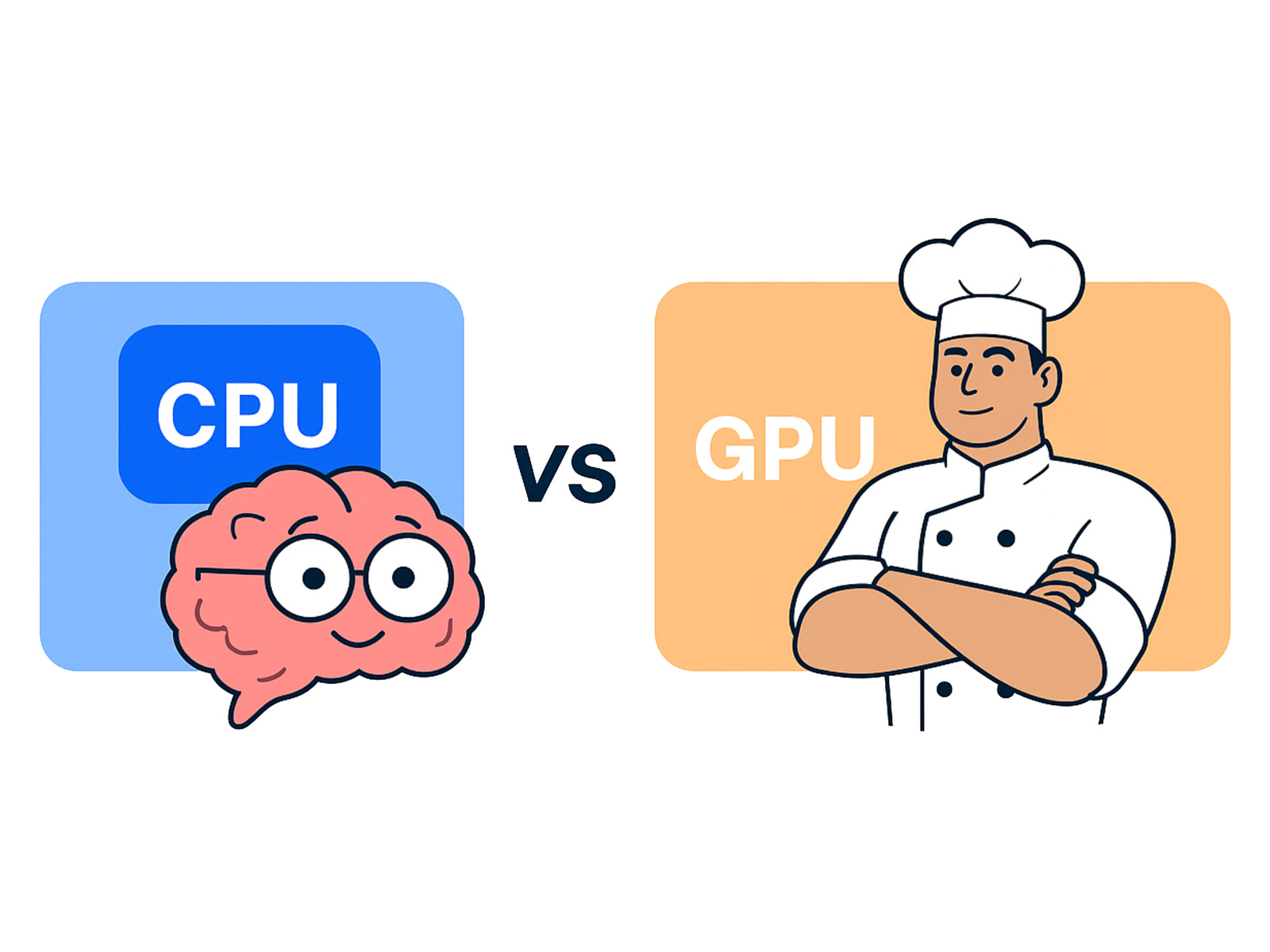
CPUs vs GPUs: The Brains and Brown Powering the Future of AI and Data Centers

If your computer were a kitchen, the CPU would be the head chef — skilled, precise, and focused on one complex dish at a time. The GPU? That’s the team of line cooks, each cranking out hundreds of meals in parallel. Both are essential, but in the world of artificial intelligence and data centers, it’s the GPU that’s driving the next big wave of growth.
Let’s break it down.
The Basics: CPU vs GPU
A CPU (Central Processing Unit) is the generalist. It’s great at handling a wide range of tasks — from opening your browser to running complex logic. It processes a few threads of work at high speed.
A GPU (Graphics Processing Unit), on the other hand, is the specialist. Originally designed to handle images and video rendering, it’s built to process many tasks at once — thousands of tiny operations running in parallel. That’s exactly what’s needed for AI, machine learning, and training large language models (like the one writing this post!).
Why This Matters for Data Centers
Here’s where it gets exciting: the demand for AI infrastructure is pushing data centers to evolve. Traditional data centers were designed around CPUs — optimizing for general workloads like web hosting, email, and databases.
But AI has different needs.
Training models like ChatGPT or powering self-driving car simulations takes massive amounts of parallel computing — something GPUs are uniquely good at. As a result, data centers are shifting from CPU-centric design to GPU-powered architectures.
This means:
- More rack space for GPU clusters
- Higher power density
- Enhanced cooling systems (GPUs run hotter than your average processor)
- Faster, smarter networking to handle data moving at mind-bending speeds
AI Is Fueling the Data Center Arms Race
Companies like NVIDIA, AMD, and Intel are racing to produce next-gen chips. Hyperscalers like Amazon, Microsoft, and Google are pouring billions into GPU-focused infrastructure. Even colocation providers are rethinking their layouts to support liquid cooling, higher wattage per rack, and specialized hardware for AI.
Meanwhile, industries from healthcare to finance are demanding faster insights, better predictions, and smarter automation — all of which require AI… and therefore, GPUs.
What This Means for the Future
The shift from CPU to GPU isn’t just a hardware upgrade. It’s a paradigm shift in how we build, design, and operate data centers. We’re entering an era where the data center isn’t just the backbone of the internet — it’s the engine room for AI.
So next time you hear about a new AI breakthrough, just remember: somewhere, a data center packed with GPUs is working overtime to make it happen.
TL;DR:
- CPUs = great for general-purpose computing (think: everyday tasks)
- GPUs = essential for parallel tasks like AI and machine learning
- AI’s explosive growth is transforming data centers, making GPUs the new MVP
- The future of computing is hot, fast, and packed with parallel processing power
